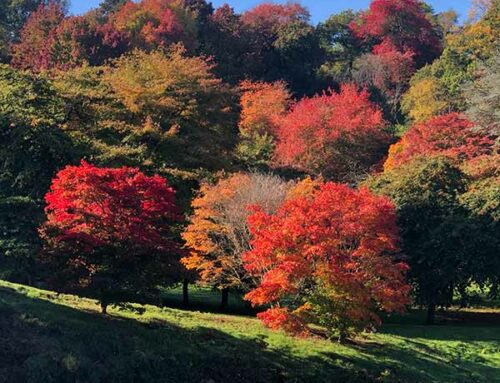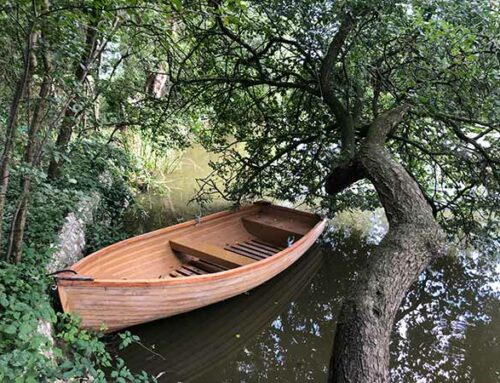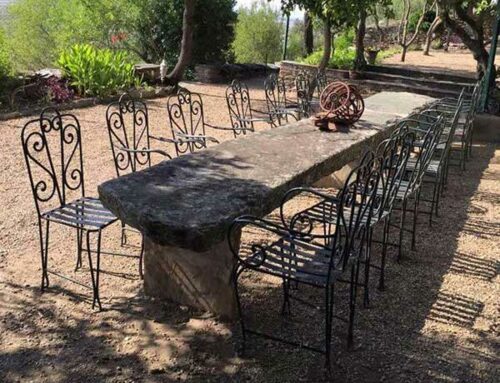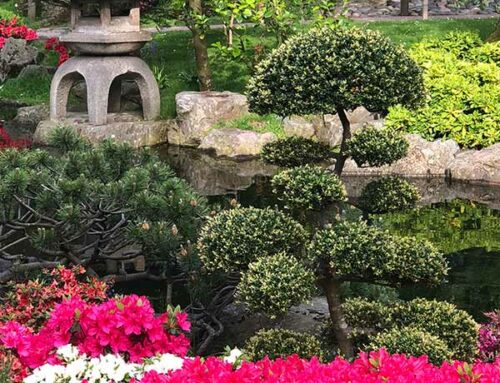The Tropical Gardens at Tresco Abbey
Where in the British Isles could you find plants from South Africa, Chile, the Canary Islands, New Zealand, and the Mediterranean all in one place? Kew is the obvious answer, but these plants aren’t under glass. They are all thriving – even self-seeding – at the tropical gardens of Tresco Abbey.
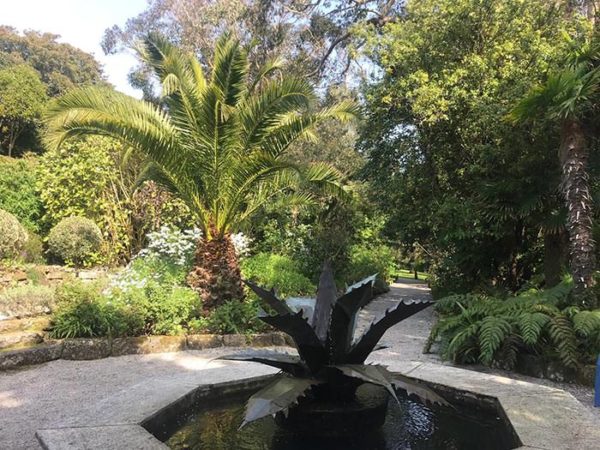
The Tropical gardens of Tresco Abbey
Nearly thirty miles off the tip of Cornwall, the idyllic Isles of Scilly provide the perfect climate for a botanical garden unlike any other in the Northern Europe. The island of Tresco sits snugly between the islands of Brhyer and St. Martins, sheltered from the worst of the Atlantic winds, and like all the islands, directly in the path of the gulf stream. This leads to an unusually warm and stable climate – the temperature rarely varies by more than 5°C over the whole year, an ideal environment for sensitive exotic plants.
The Gardens were founded by Augustus Smith in 1834, but the history of the site goes all the way back to 946 when a Benedictine Abbey was founded there. Later in 1114 the Priory of St Nicholas was founded, but did not survive the dissolution of the monasteries. The site had been long abandoned by the time Augustus Smith founded the Gardens. The islands were windswept and barren, so Smith began planting shelterbelts using Elm, Sycamore, Oak, and Poplar trees, as well as lots of gorse bushes. He later planted Monterey Pine and Cypress, which well suited the coastal conditions.
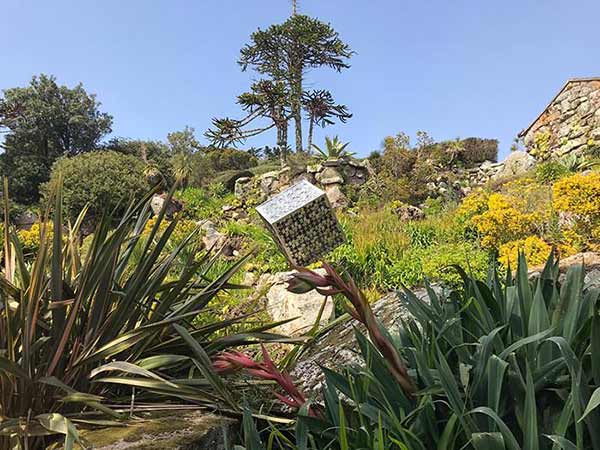
The Tom Leaper Metal Cube Sculpture in the Abbey Gardens.
Upon entering the Tresco Abbey Gardens today, it is astounding to think that there was ever a time it wasn’t a beacon of abundance. Every bed is full to bursting with lush foliage: geraniums cover the ground with purples and yellows, blue agapanthus stems tower above the greenery, and behind every leaf is another species waiting to be discovered. They don’t do uniform beds here! A bridge the colour of the archipelago’s shimmering shallow waters is flanked by two Ligustrum lollipop topiary trees – a large Canary Island Palm (Phoenix Canariensis) droops over the left and a pine towers over the right, leading you through to the main gardens.
The garden is set on the side of a small hill, leading to two distinct climate areas. The foot of the hill is sheltered (or at least, as much as it can be on an island in the Atlantic), with deep, moist soil, perfect for plants from Chile and New Zealand. Further up the hill the soil is shallower and drier, resembling the table mountains of South Africa, hosting plants from SA and the Canary Islands. Halfway up, on the west side, is a Mediterranean garden, the plants of which enjoy the temperate middle ground.
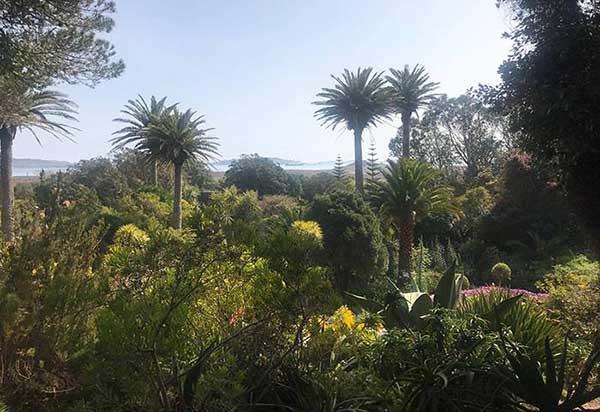
Get away from it all in the tropical gardens at Tresco Abbey
Upon crossing the bridge, lush, colourful, rows of flowering shrubs and New Zealand Flax (Phormium Tenax) flank the path, mottled with tall bamboo, leading to an inviting archway under an imperious Quercus Ilex. Succulents abound, and burst from dry stone walls, here and all over the many Isles of Scilly. Turning right after the bridge, before the archway, various ferns cover the landscape, including the Silver fern, an emblem of New Zealand, most notably on the kit of the All Blacks. The ferns recede to reveal an open lawn surrounded on all sides by dense foliage, and shaded by enormous Chusan Palms (Trachycarpus Fortunei) and Monkey Puzzle trees (Araucaria Araucana), some 30ft tall – enormous for such a northern latitude.
If one is lucky enough, the gorgeous Golden Pheasants of Tresco can be seen strutting across the grass. The tropical gardens at Tresco act as a nature sanctuary for these birds and red squirrels, and they can often both be seen around the gardens, particularly at the café, aiming to scoop up some crumbs of the delicious cakes served there.
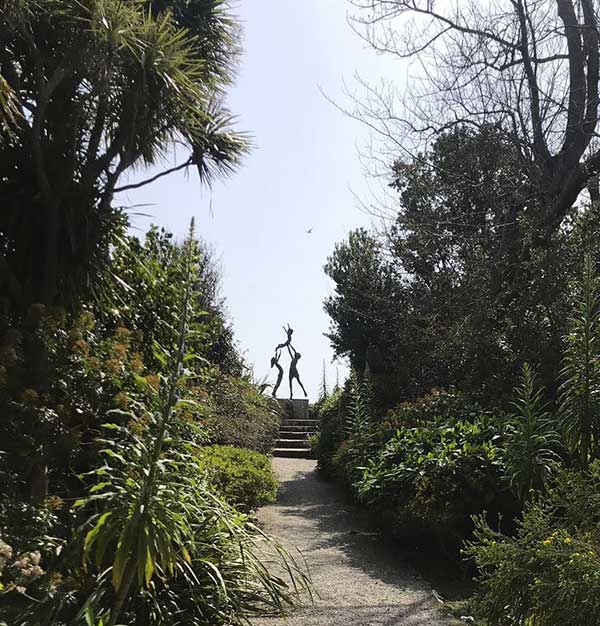
Explore the Tresco Gardens and find ‘The Tresco Children’ Bronze Sculpture by David Wynne
To south of the lawn, past rows of bamboo and tall Osmanthus bushes, lies a monument to the most famous attribute of these Islands. The Valhalla museum houses many figureheads of ships wrecked in these waters, some of the most dangerous in the UK, from centuries gone by. There is also a 18lb cannon from the Royal Navy, which lost four ships here when returning from Spain in 1707. The gun was likely looted from the siege of Toulon earlier that year. Turning north from here, a sweeping straight path runs the length of the gardens in between the huge mounds of green, and steps at the top of the hill lead to a figurehead of Poseidon – the Greek god of the sea, who rules life on the islands. A few steps below him, neat low hedges surround a flower garden, and at its centre, a statue of Gaia, the Greek personification of the earth, pays homage to the beauty of the natural world so wonderfully displayed here.
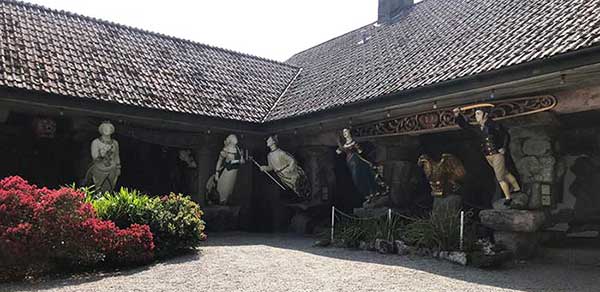
Visit the Valhalla Museum – featuring ship’s figureheads and nautical memorabilia
Turning one’s back on Poseidon, an incredible view presents itself. From here all the areas of the garden are visible. On the far left, the winding bushes and palms border the ruins of the old abbey, and ancient arch enclosing tree ferns (dicksonia antarctica) and more plants from New Zealand. Cedar, palm, monkey puzzle, and pine trees stand tall over the landscape, framing the view. Up in this drier area the landscape is dominated by seriously exotic succulents. At the right time of year, the garden’s impressive collection of Proteas can be seen, including the King Protea, the national flower of South Africa.
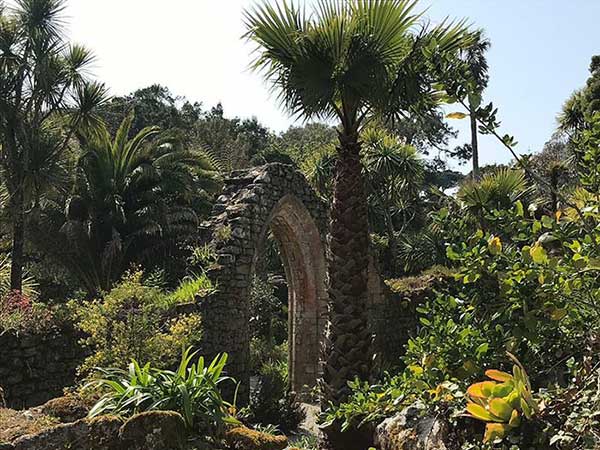
Don’t miss the archway of the medieval monastery at Tresco Abbey Gardens
Also on show up here are Yuccas, Aloe, and truly enormous variegated Agave plants. Despite the arid soil, new species cover nearly every inch of the bed. This is because the gardens allow their plants to self-seed, and despite the noticeably different planting areas of the garden, if something is happy growing somewhere, they will not remove it to keep to any plan of what should and shouldn’t be where. This leads to the abundance of growth behind every rock and on every possible surface.
From the north-west end, the path descends into a Mediterranean vista. Sheltered and shaded by tall trees, a small building covered in a mosaic provides a shaded seat, to admire a beautiful fountain made to look like an Agave Americana. Lollipop ligustrums and small juniper columns punctuate lush beds. Descending still from here, the archway seen on the way in leads back to the familiar blue bridge.
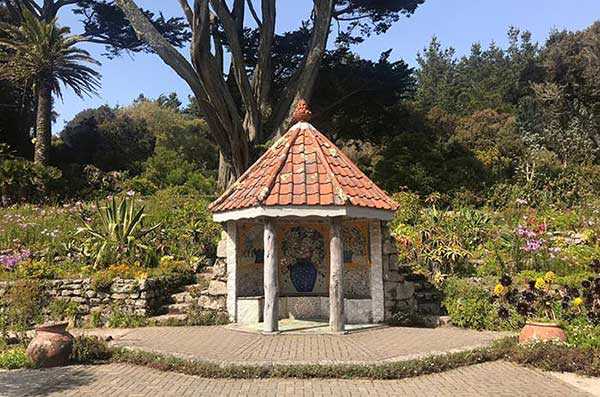
The Shell House designed by Lucy Dorrien-Smith at Tresco Abbey
The Tresco Abbey Gardens are a marvel of the northern hemisphere. Despite harsh winter winds and salty storms, this paradise of tropical flora positively flourishes here. The overgrown and free planting gives the feeling of a lost world, one that it would be easy to be lost in forever. If you want to recreate the feeling of this exotic paradise in your own garden, visit www.paramountplants.co.uk or email our advisors at [email protected]. As this garden shows, it is truly astonishing how many exotic plants can not just survive, but thrive in our UK climate.
You may be interested in our other blogs featuring sub-tropical gardens in the UK:
Abbotsbury Gardens Dorset
Overbecks Garden, Devon
Heligan, Cornwall

